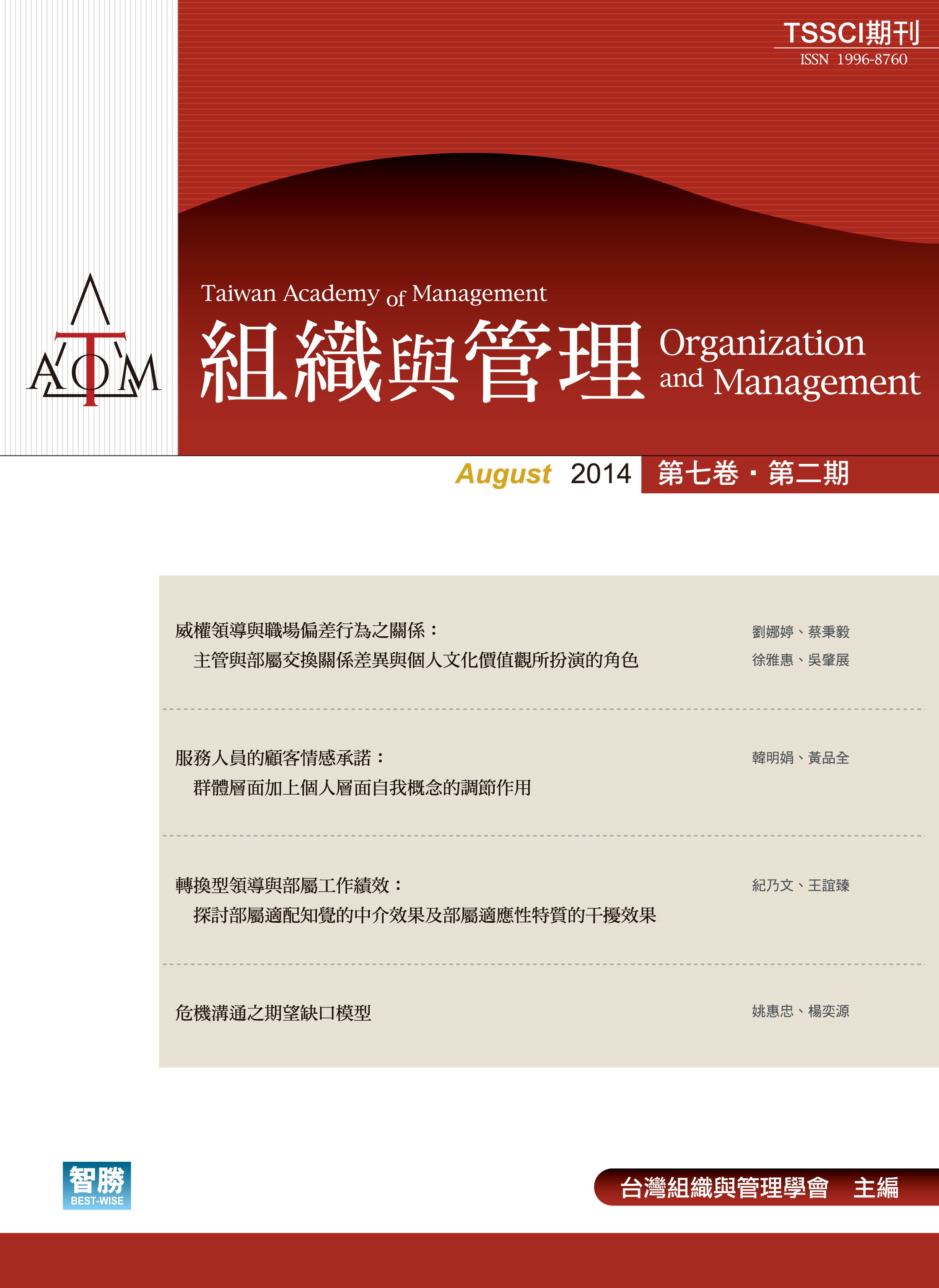Hot News
| 中文篇名 |
危機溝通之期望缺口模型 免費試閱 | |
|---|---|---|
| 英文篇名 |
The Expectation Gap Model of Crisis Communication | |
| 作者 | ||
| 中文摘要 |
本研究以實驗法探討企業與受眾之間可能存在的期望缺口,以及期望缺口對危機溝通效果之影響,並就缺口與溝通效果之間的關係建構危機溝通之期望缺口模型。模型經驗證後發現,解釋接受程度是影響組織危機溝通效果之關鍵變項,而且期望缺口是影響解釋接受程度之前置變項。組織若希望提高解釋之被接受程度,應關注受眾對組織危機反應之期望與其成因,唯有縮減期望缺口或根據受眾之情境認知所做之反應策略選擇,才能符合受眾之期望,從而降低受眾怒氣、保護組織聲譽,最後減少受眾之負面口碑。 | |
| 英文摘要 |
This study aims at constructing an expectation gap-based model of crisis communication effects. It employed experiments to validate the relationship between organization-audience expectation gaps, account acceptance and crisis communication effects. This model suggests that expectation gaps predict account acceptance, and account acceptance positively influences crisis communication effects. Based on this model, the author suggests that organizations which desire high account acceptance should focus on audiences’ expectations and their causes, because by narrowing expectation gaps and concurring with audiences’ situational perceptions of crises can organizations effectively reduce public anger, protect reputations and neutralize negative word-of-mouth. | |
| 關鍵詞 |
危機溝通、期望缺口、解釋接受程度、crisis communication、expectation gap、account acceptance | |
| 刊名 | ||
| 期數 | ||
| 起訖頁 |
127-163 | |
| 出版單位 | ||
| DOI | ||
| QRCode |
| |
| 上一篇 |



